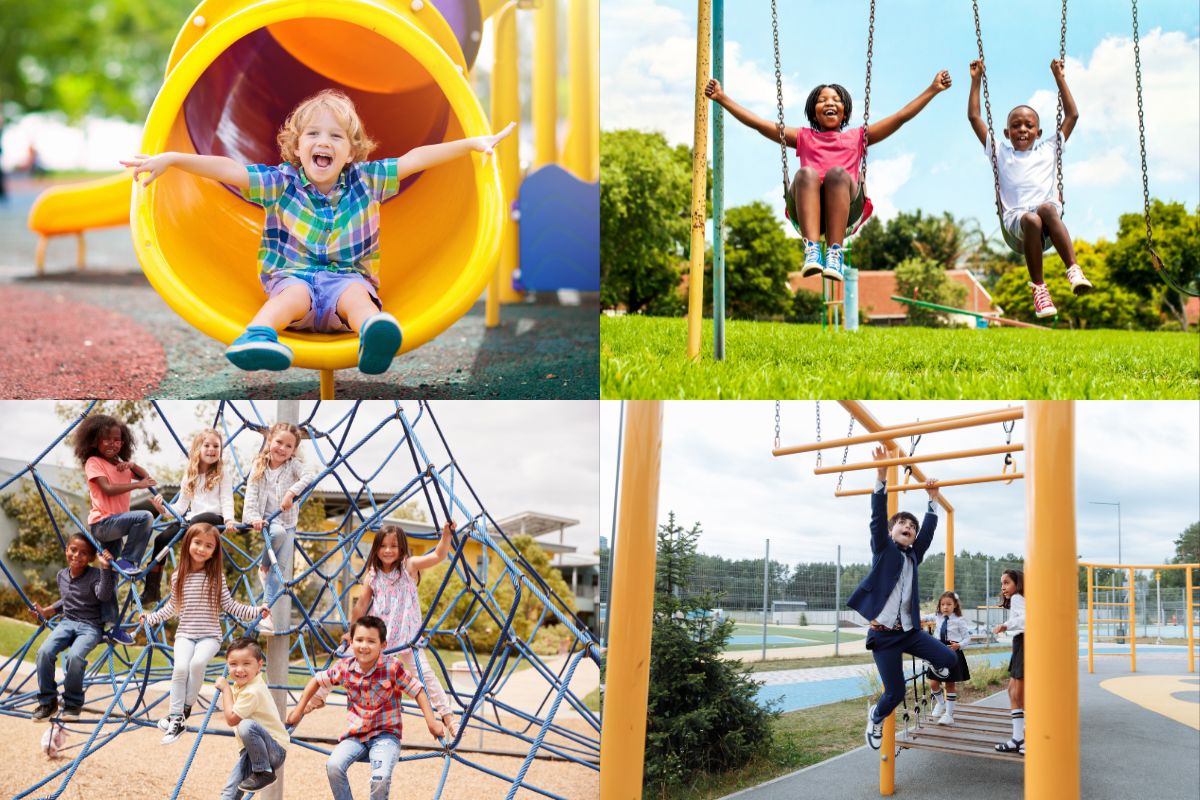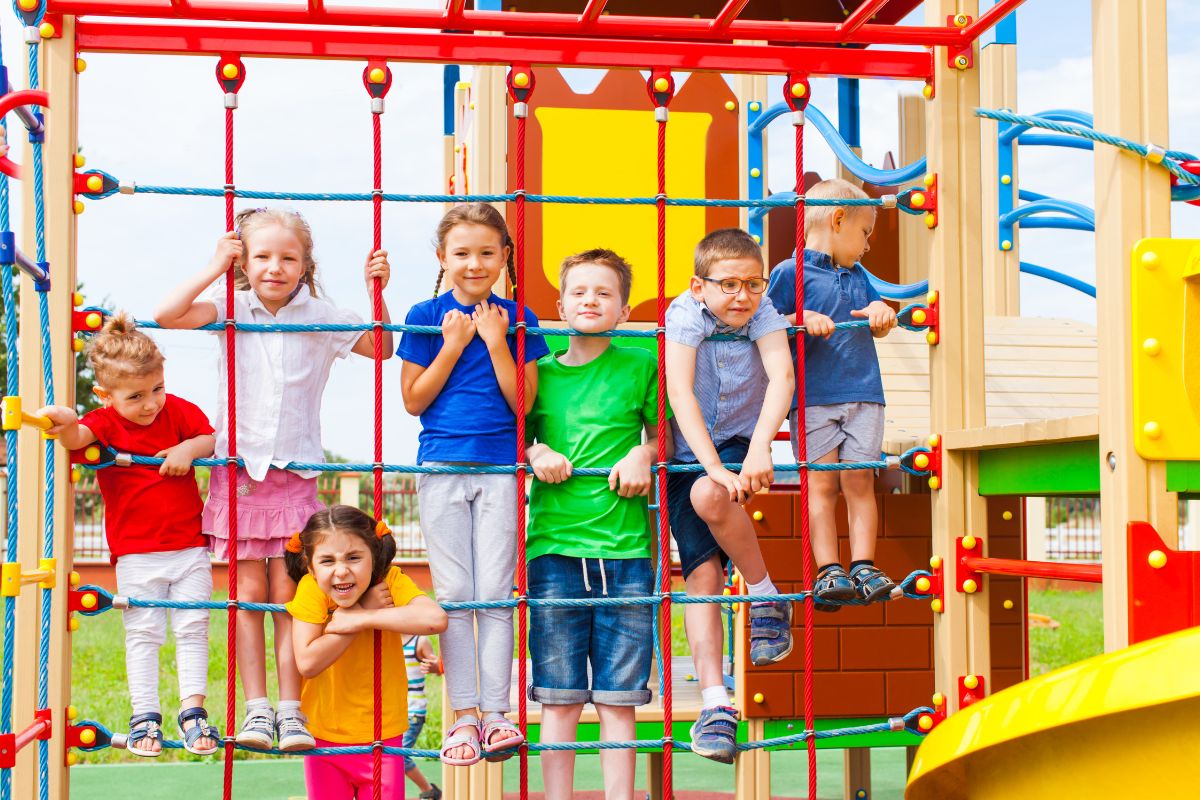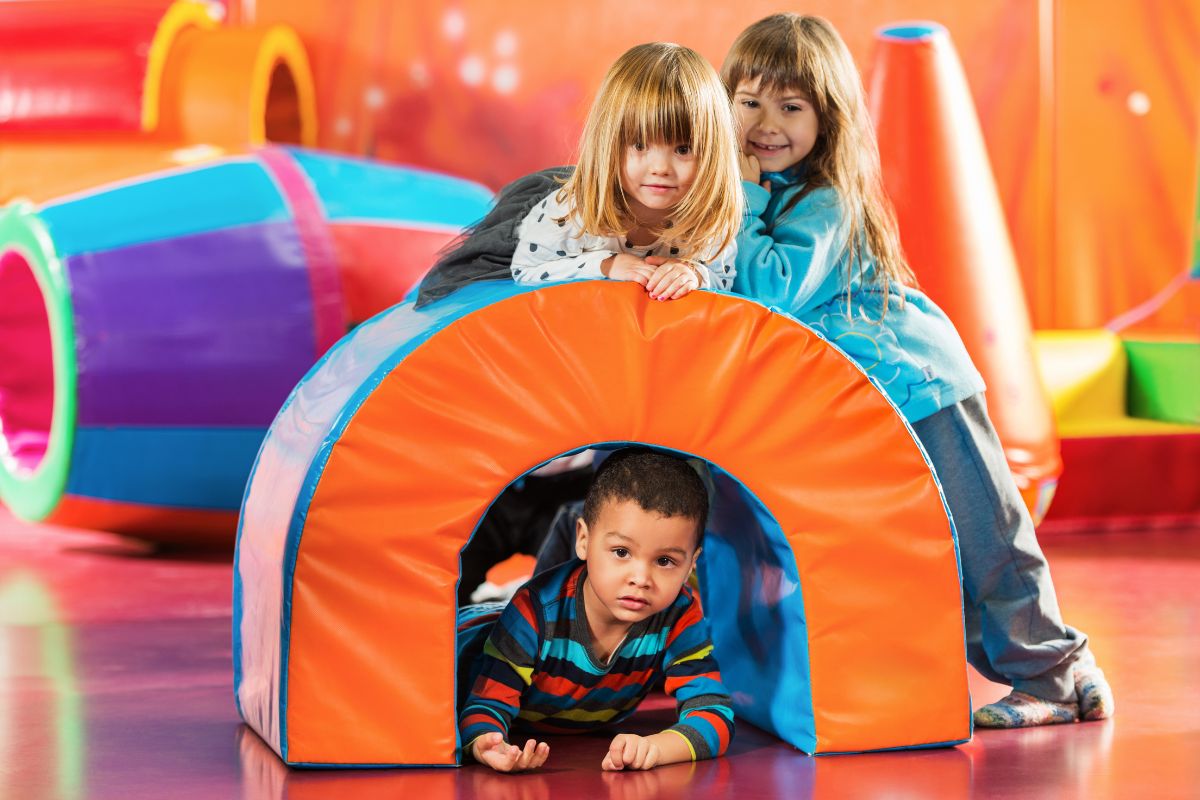School playground equipment is an indispensable part of a school area. It gives children a playing area, helps in exercises, and enhances their skills in interactions. In this blog post, we will delve into the world of different school playground equipment, its accruing benefits, and helpful guidelines in order to select cutting-edge play equipment for your school.
Types of School Playground Equipment

Swings
Swings are a piece of apparatus that really invoke the idea of the school playground. They can also come in a number of styles, from the traditional belt swing to the bucket swing for the younger child. They develop a sense of balance and coordination while providing a feeling of freedom and exhilaration for children.
Slides
Slides are another favorite among children. They come in all shapes and sizes, ranging from straight slides to spiral slides. Slides promote physical activity and are good for developing confidence by climbing up the stairs and sliding down.
Climbing Structures
Jungle gyms and climbing walls are some examples of climbing structures that go a long way in developing both strength and coordination. They offer an element of challenges through which children can work their muscles and help sharpen their minds in problem-solving skills.
Monkey Bars
These can be considered very good for the strength of the arms, hands, and shoulder muscles. Besides these, it builds strength in the grips and hand-eye coordination. Monkey bars come in different forms—straight and curved bars.
Merry-Go-Rounds
Merry-go-rounds present another form of enjoyment. Kids can diametrically spin around, really exciting but helpful in balancing their bodies and maintaining spatial awareness.
Seesaws
These are very useful, as they teach a lot to the children about balance and how to cooperate with each other. It involves the cooperation of two children in order to keep the see-saw swinging around.
Playhouses
Playhouses are really nice for imaginary games; they offer space with the ability to pretend, socialize, tell stories, and enhance creativity and social skills.
Sandboxes and Water Play Areas
Sandboxes and water play zones can be used to let children engage in sensory play. Children can dig, build, and explore textures, helping them with sensory skills and fine motor development.
Advantages of School Playground Equipment
Physical Development
School playground equipment encourages physical activity, which is very necessary for the health benefits of the child. Climbing, swinging, and sliding help in muscle building, coordination, and all-round fitness.
Social Skills
Playgrounds are social hubs that bring children together. School playground equipment encourages children to be team players, sharers, and communicators in the course of playing together.
Cognitive Development
A majority of playground activities involve solving puzzles or critical thinking processes. Climbing structures and obstacle courses encourage children to think and plan, hence enhancing their cognitive development.
Emotional Well-being
A playground provides a platform through which children can express their souls and rid themselves of pent-up energy. Playing on school playground equipment may assist to forget worries, make them feel light-headed, and reduce stress.
Creativity and Imagination
Playhouses and open-ended play areas bring out the children’s creativity. They can make up stories and role-play, which aid in the use of imagination that maybe structured activities wouldn’t really allow.
How to Choose the Right School Playground Equipment

Attention to Safety
Safety considerations should come first when choosing school playground equipment. Ensure the equipment itself has passed the safety standards and is constructed from sturdy, non-toxic materials. Next, install safety surfacing, like rubber mats or sand, to cushion falls and reduce injuries.
Age Appropriateness
The choice of the equipment should be such that it serves the age group of the children who shall use it. Younger kids require a size dedicated to their ability and size, while older kids can be able to negotiate more challenging and complex structures.
Considerations of Space
Consider the amount of space available at your school. Make sure there is enough which can be measured in the area where the equipment shall be placed, that it fits comfortably and leaves safe movement around it.
Variety and Inclusivity
A wide variety of equipment will help service various interests and abilities. Inclusive playgrounds are designed considering children with disabilities in mind to make sure everyone can take part and be able to enjoy.
Durability/Maintenance
Look for playground equipment that is made to last—something that is built to endure daily use. Not only that, but it also seriously calls for frequent maintenance to keep the apparatus’ integrity and guarantee complete safety.
Budget
Playground equipment can be a very expensive investment. Plan your budget and find out which gives the best value for money while meeting quality and safety measures.
Consult with Experts
If you are confused in the selection of equipment, then consult with experts who specialize in playground equipment habits. They can guide you as per the needs of your school and help you toward fruitful decisions.
Conclusion
School playground equipment forms part of the basic development and well-being of children while at school. The landscape of challenges and play variety that the playground equipment offers can help educate children—physically, socially, and emotionally—in school. Upgrading or designing a new facility while keeping safety, variety, and inclusivity in constant thought is what will make a facility ensure that the joy that playground play brings is accessible to all children.
